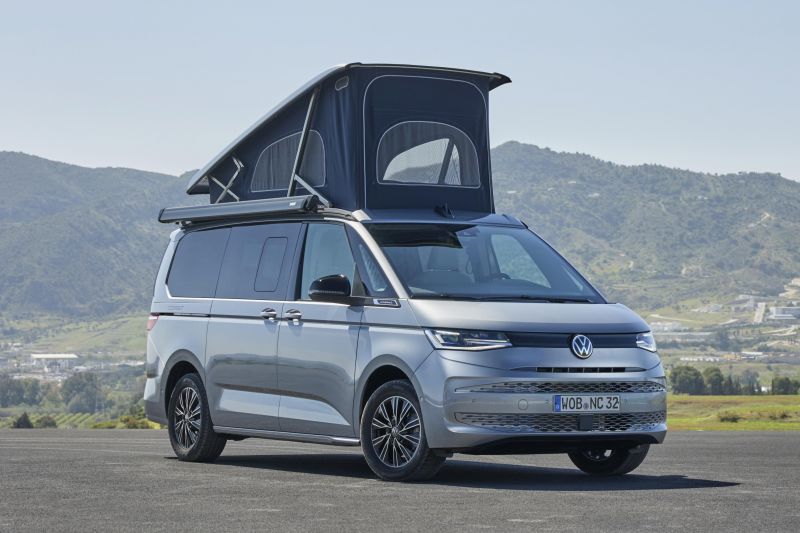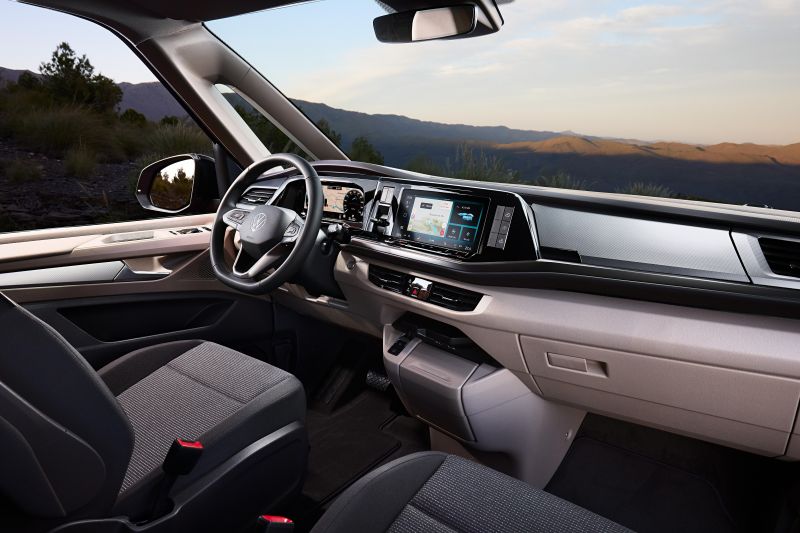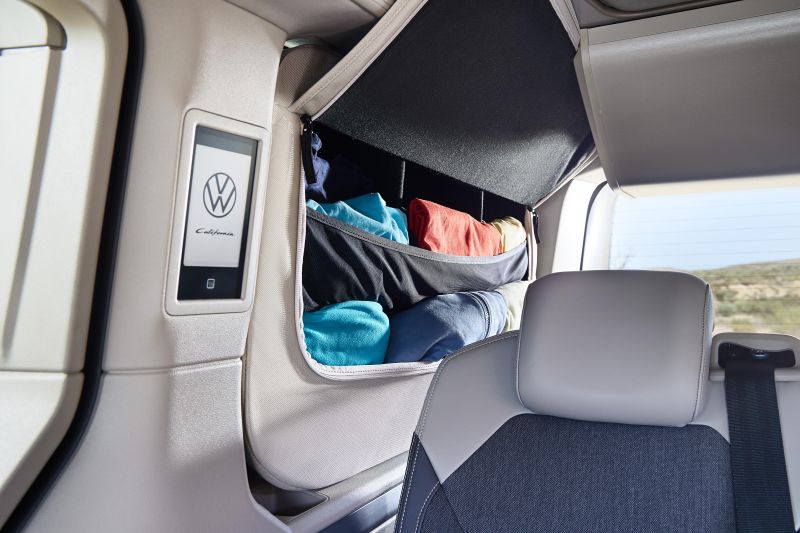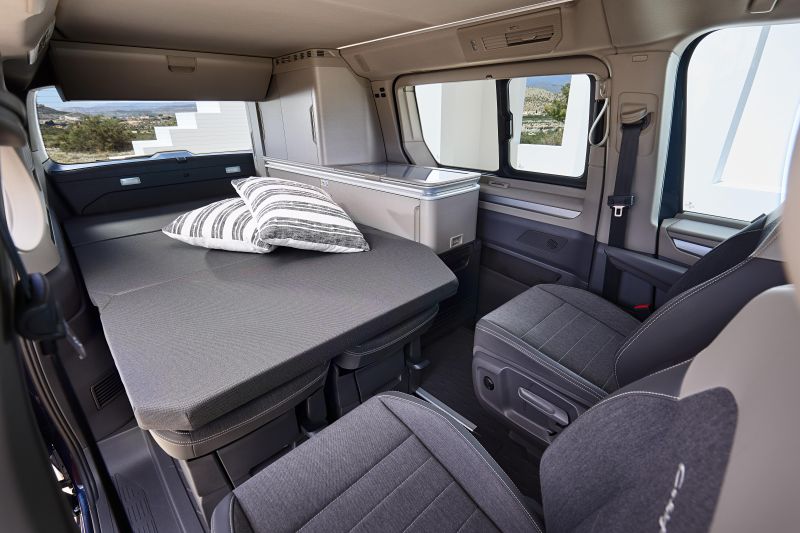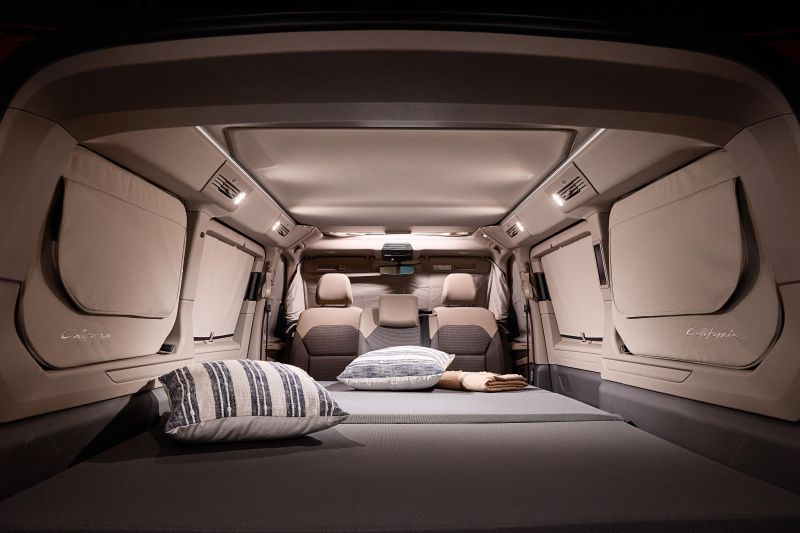Derived from the long-wheelbase T7 Multivan, the latest Volkswagen California enjoys the benefits of the MQB passenger car platform shared with models like the Golf, departing from its conventional undersides as a commercial vehicle.
Moreover, it is the initial iteration of the California lineup to present plug-in hybrid (PHEV) power.
Volkswagen Australia has confirmed the arrival of the new California for local distribution, although the lineup and anticipated showroom debut date remain undisclosed.
Internationally, the California will be available in five versions: Beach, Beach Tour, Beach Camper, Coast, and Ocean.
Historically, Australia has solely received the California Beach, but there is no assurance that the previous model hierarchy will transition to the new generation.
With dimensions of 5173mm in length, 1941mm in width (excluding mirrors), and 1990mm in height on a 3124mm wheelbase, the new California surpasses its forerunner by 269mm in length, 37mm in width, and offers 121mm more space between its axles.
Standard features across all trim levels include sliding doors on both sides of the campervan – a first in the model’s lineage, allowing owners to set up their awnings wherever they desire – along with a pop-up roof that provides additional room for taller occupants wandering through its aft compartment.
The outgoing bench seat is replaced by detachable rear seats, and all seats are equipped with storage drawers underneath them for extra storage capacity.
The California Beach acts as the entry-level variant, featuring a manual pop-up roof, six seats, and a spring mattress sized at 2.05×1.14m – wider than a King Single and longer than a Super King.
Beach Tour models add rotating and height-adjustable front seats, an extra seating row (consisting of three seats), ergonomic foldable chairs (stored in the tailgate), pop-up roof illumination and USB ports, sliding windows in the sliding doors, and a 40Ah camper battery.
Moreover, it is furnished with a 5.0-inch screen mounted on the C-pillar, showcasing the California’s water levels, lighting controls, battery status, refrigerator temperature, and auxiliary heating configurations. These functionalities can also be managed via a smartphone application or the central entertainment screen.
A folding table and an extra 1.98×1.33m folding mattress are provided in the California Beach Tour.
While the aforementioned California trims are designated as passenger vehicles, the Beach Camper, Coast, and Ocean are designed as campervans.
In the scenario of the Beach Camper, this translates to a five-seater featuring a retractable mini-kitchen – inclusive of a single-ring gas stove, utensil drawer, and added storage space – along with a 230-volt power outlet.
California Coast models house only two rear seats, allowing more room for a kitchenette – with cupboards, sink, and single-ring gas stove – a 28-liter freshwater reservoir, an extra 40Ah camper battery, an additional 230-volt power socket, and a folding bed sized at 1.98×1.06m.
Volkswagen’s prime California Ocean elevates the features of the Coast variant and incorporates Mélange Raven recycled fabric seating material embroidered with California lettering, heated front seats, a supplementary air heater, and automatic climate control.
Europe will have a choice of three engines, with Australia set to receive the 110kW and 360Nm 2.0-liter four-cylinder turbo-diesel from the Multivan lineup, along with a 150kW/320Nm 2.0-liter turbocharged petrol engine and a plug-in hybrid unit.
The plug-in hybrid configuration combines a turbocharged 1.5-liter four-cylinder engine with an electric motor, producing a total output of 180kW, with power distributed to all four wheels – marking a first not only for the California range but for any Volkswagen vehicle based on the MQB platform.
Volkswagen specifies that each engine is paired with a dual-clutch automatic transmission and powers the front wheels, except for the all-wheel-drive plug-in hybrid.
Pricing details for Australia are pending, yet the outgoing T6.1 range is priced between $93,790 to $103,730 before incorporating on-road expenses.
The conventional Volkswagen T7 Multivan people transporter is scheduled to arrive in the local market in the final quarter of 2024 (October to December).
MORE: VW pinpoints the most car-like Multivan yet for Australia, reveals lineup details

